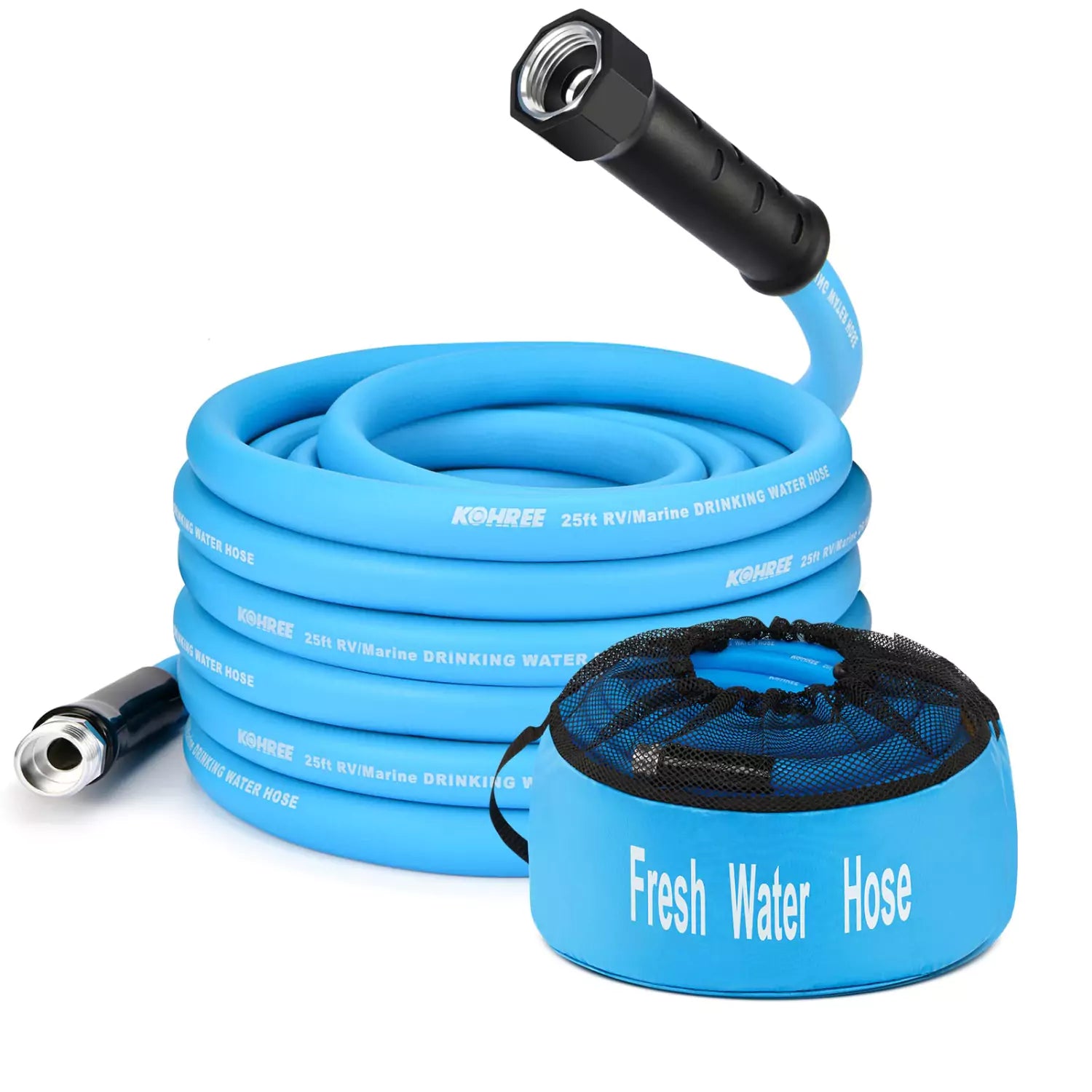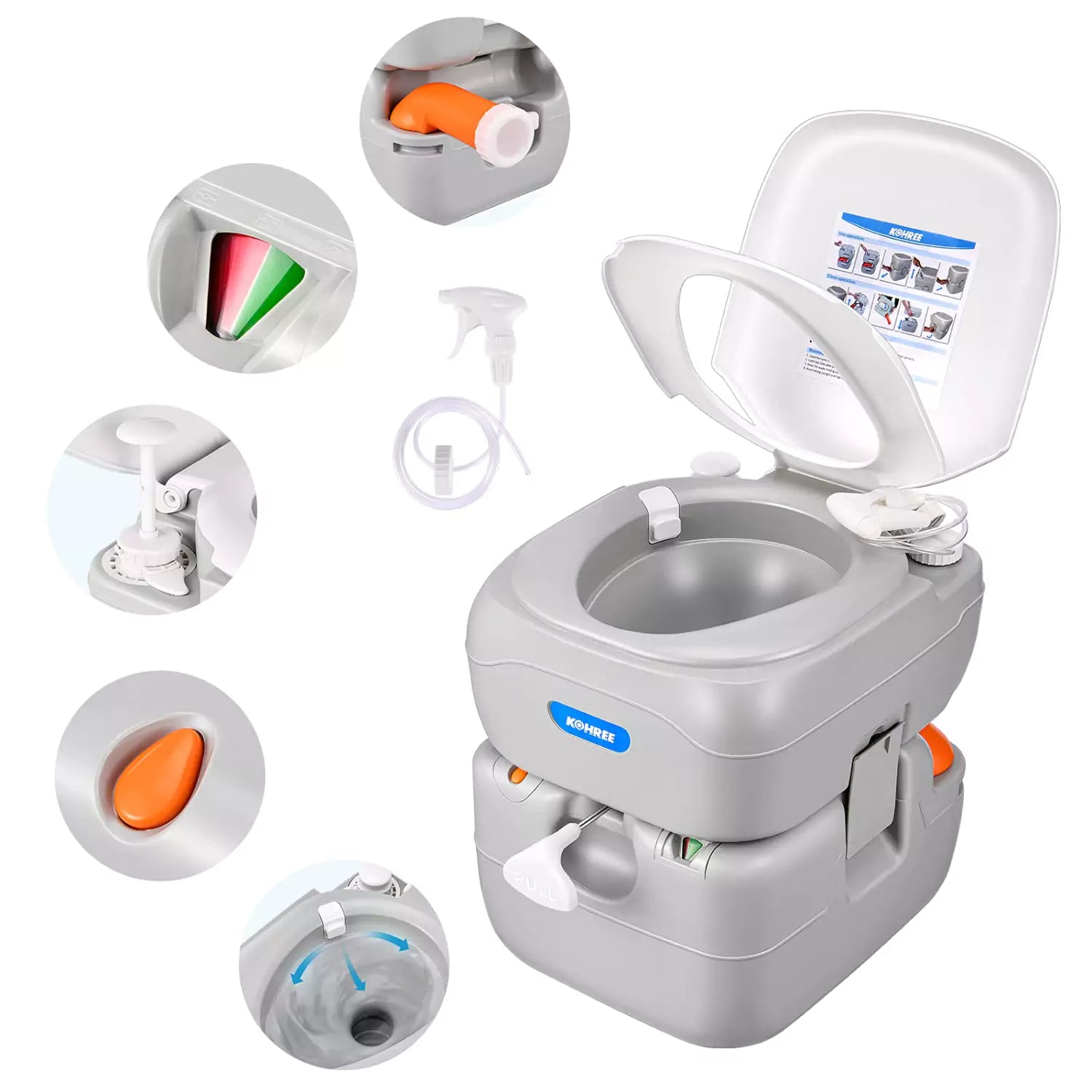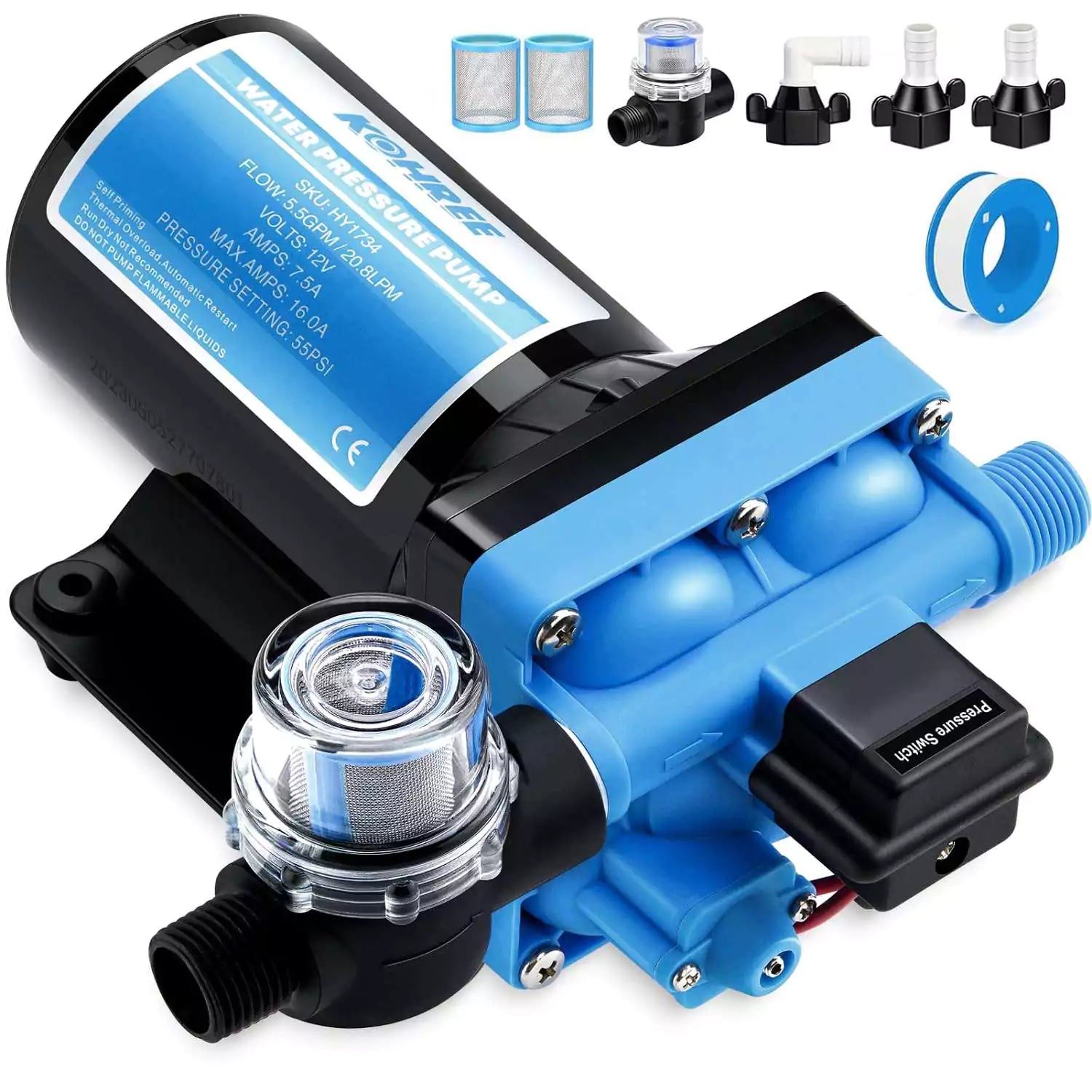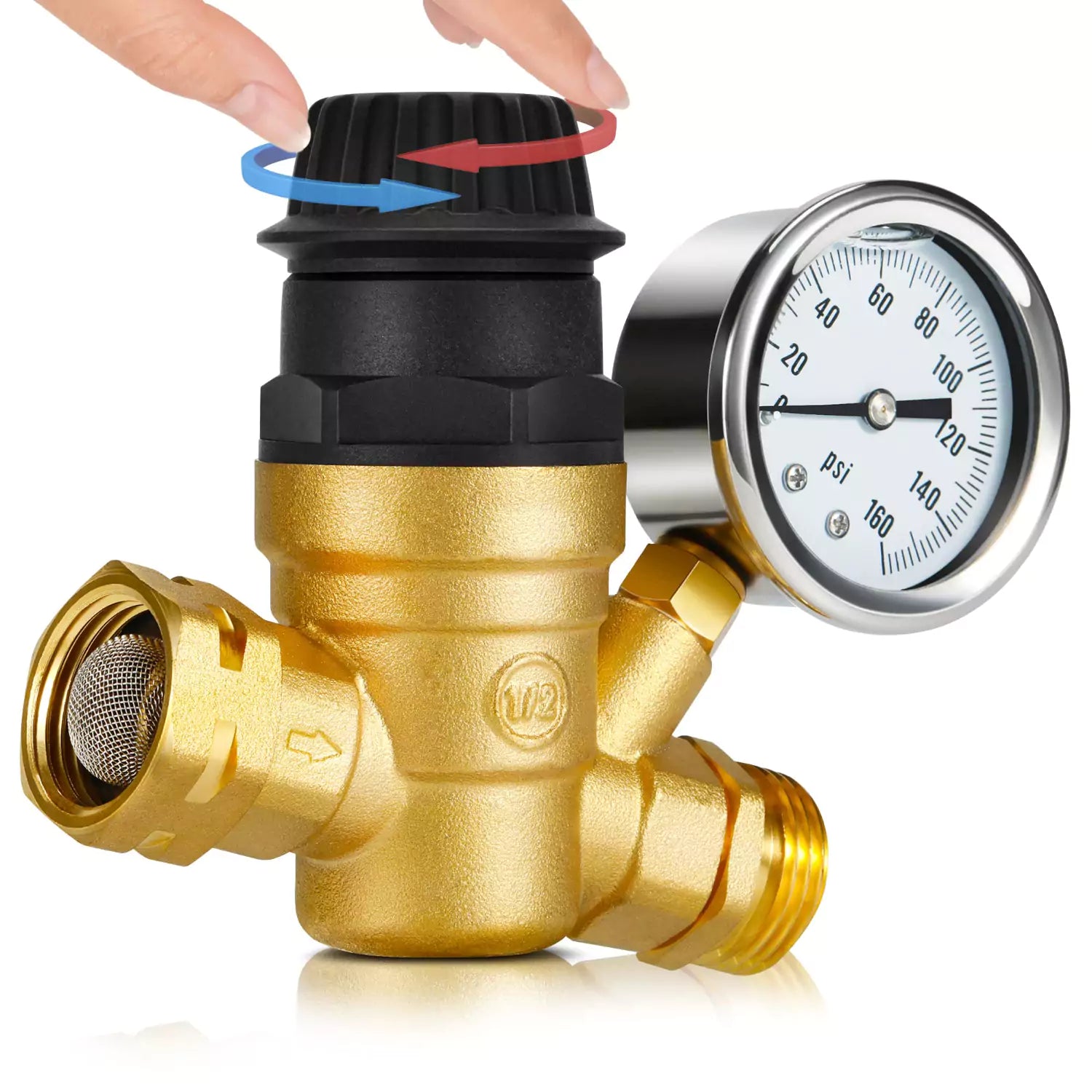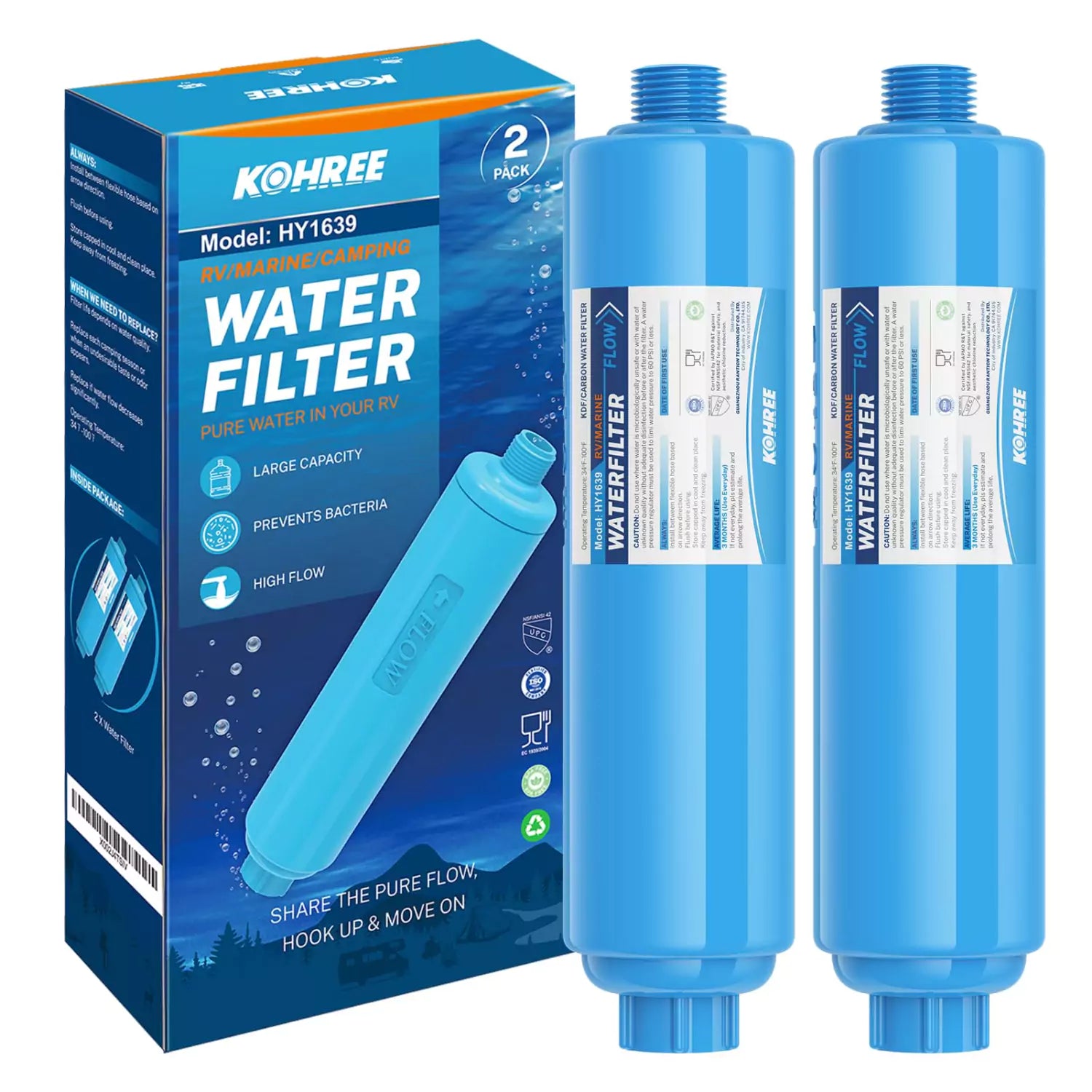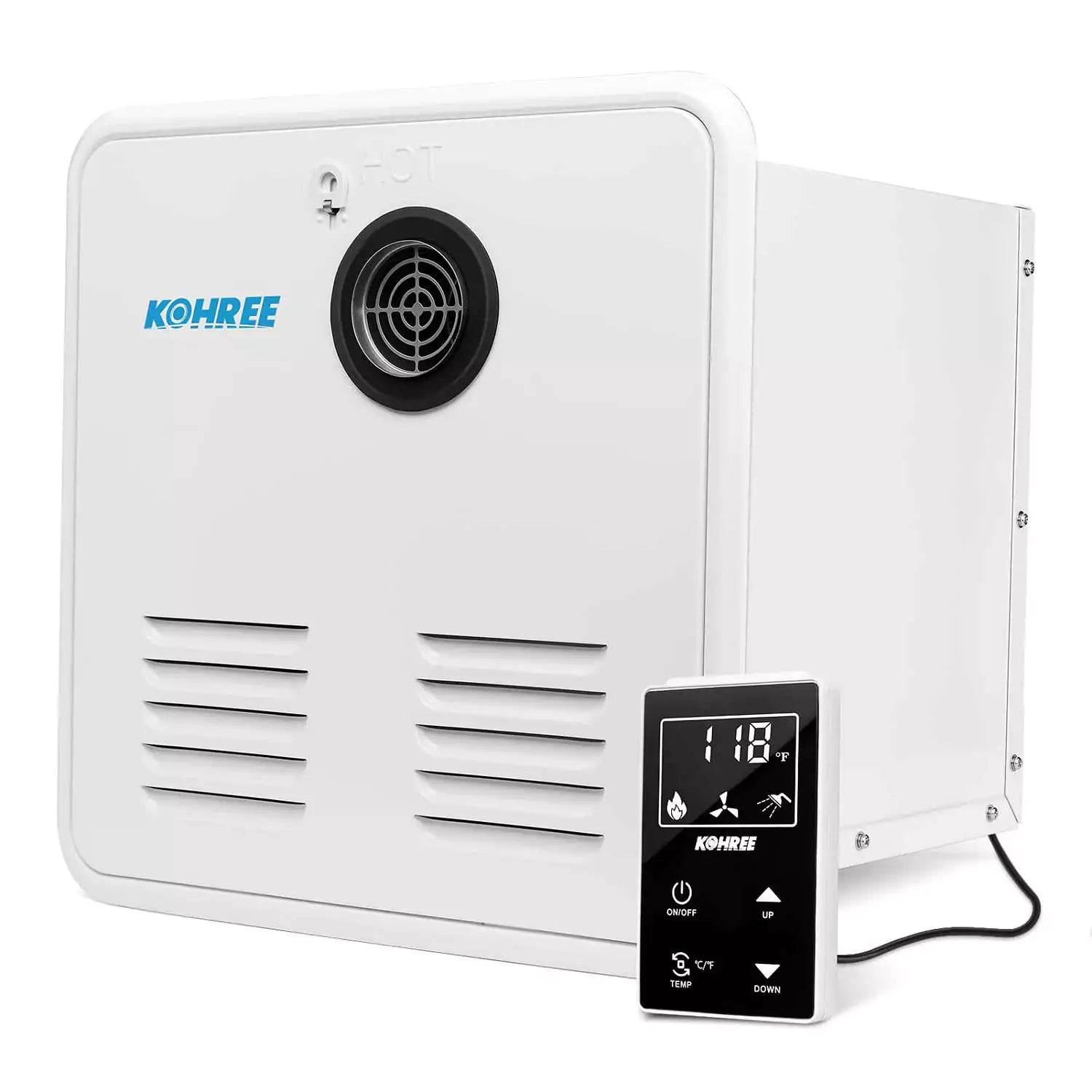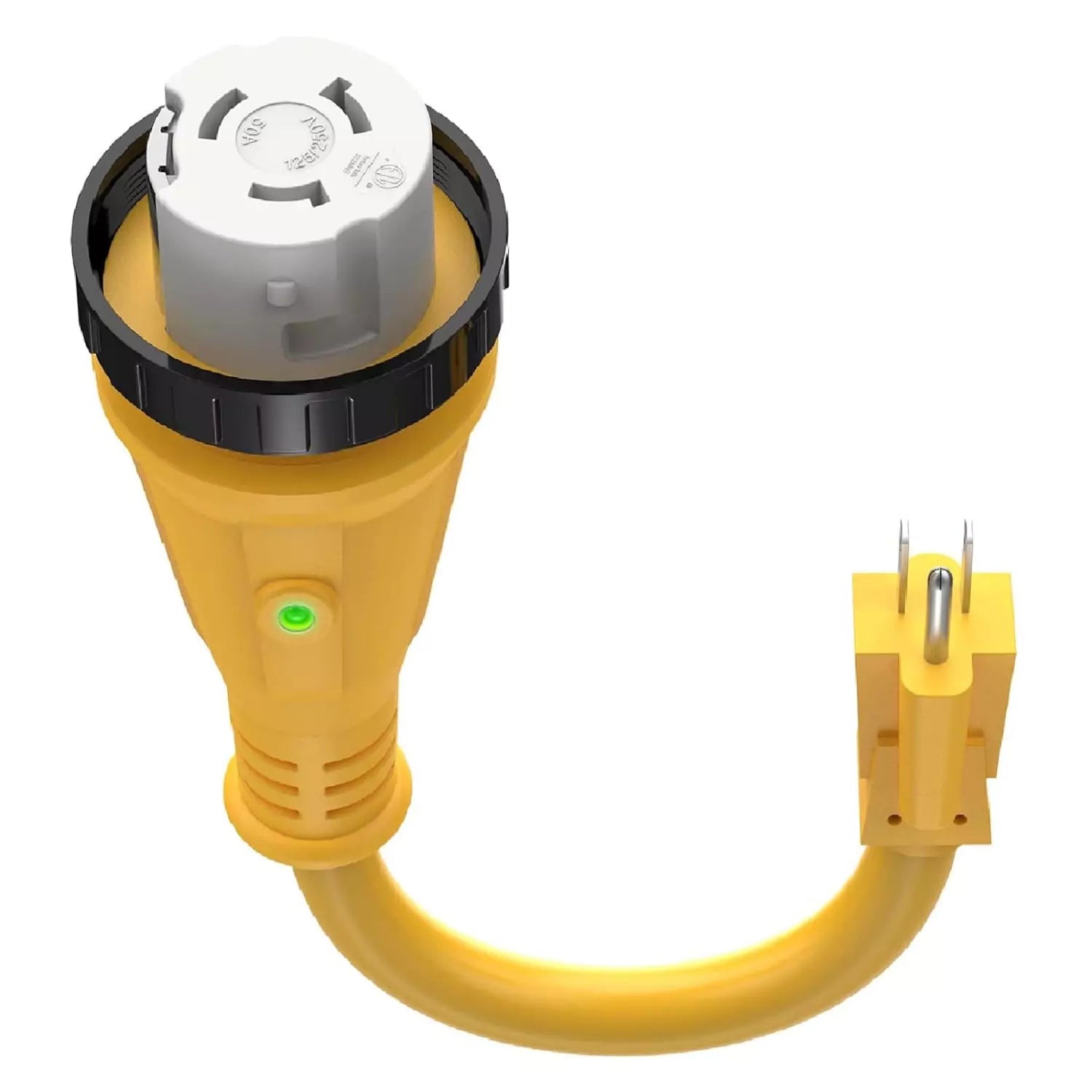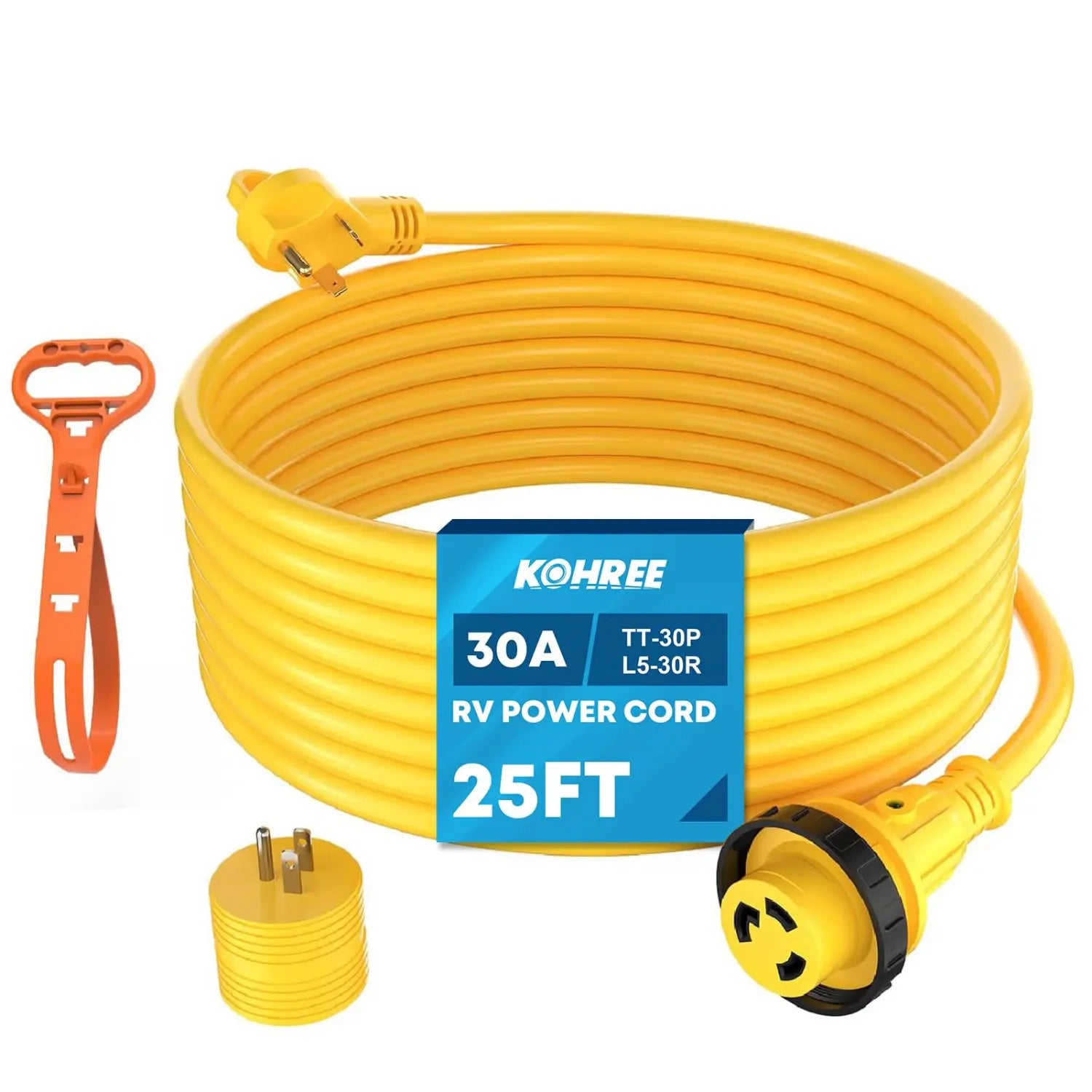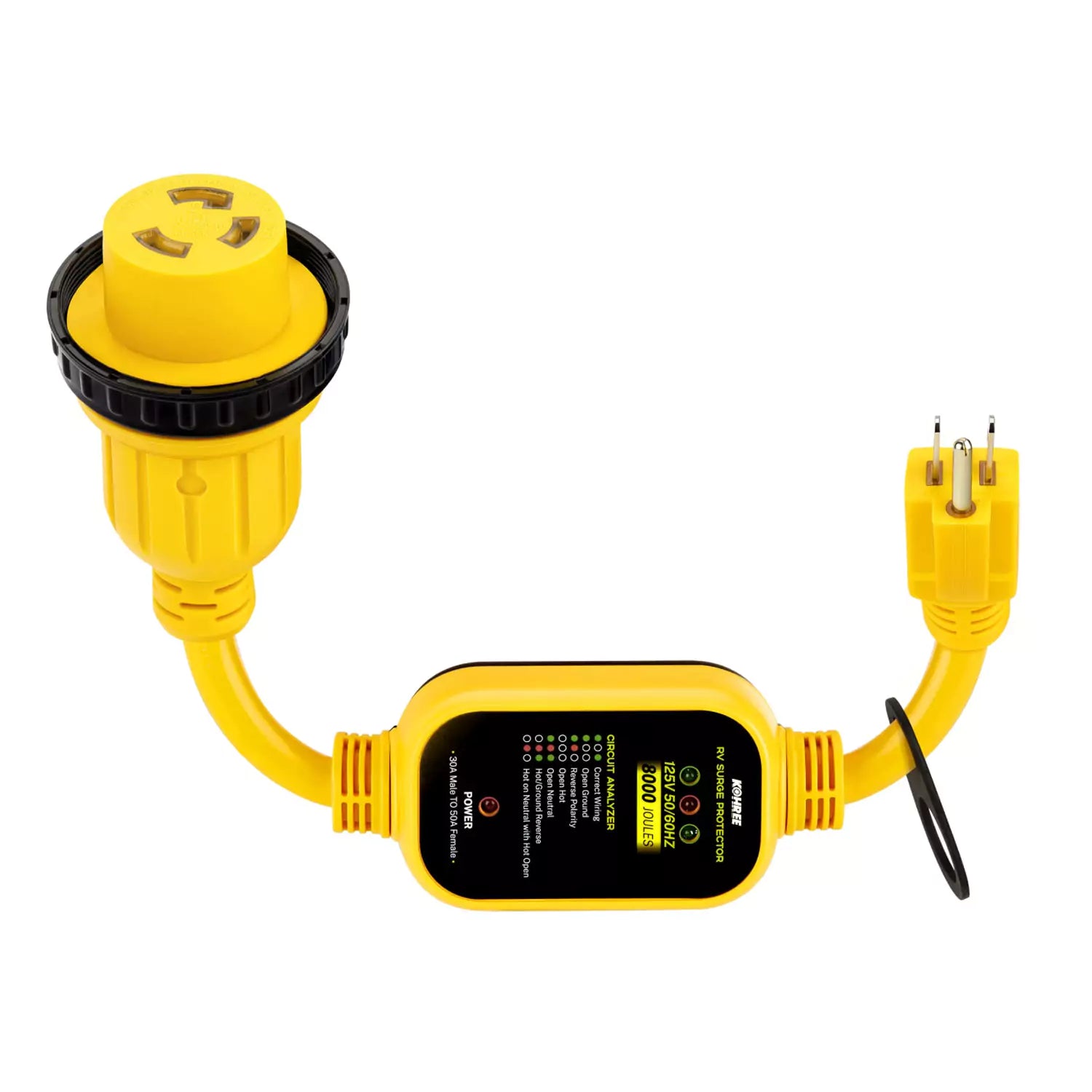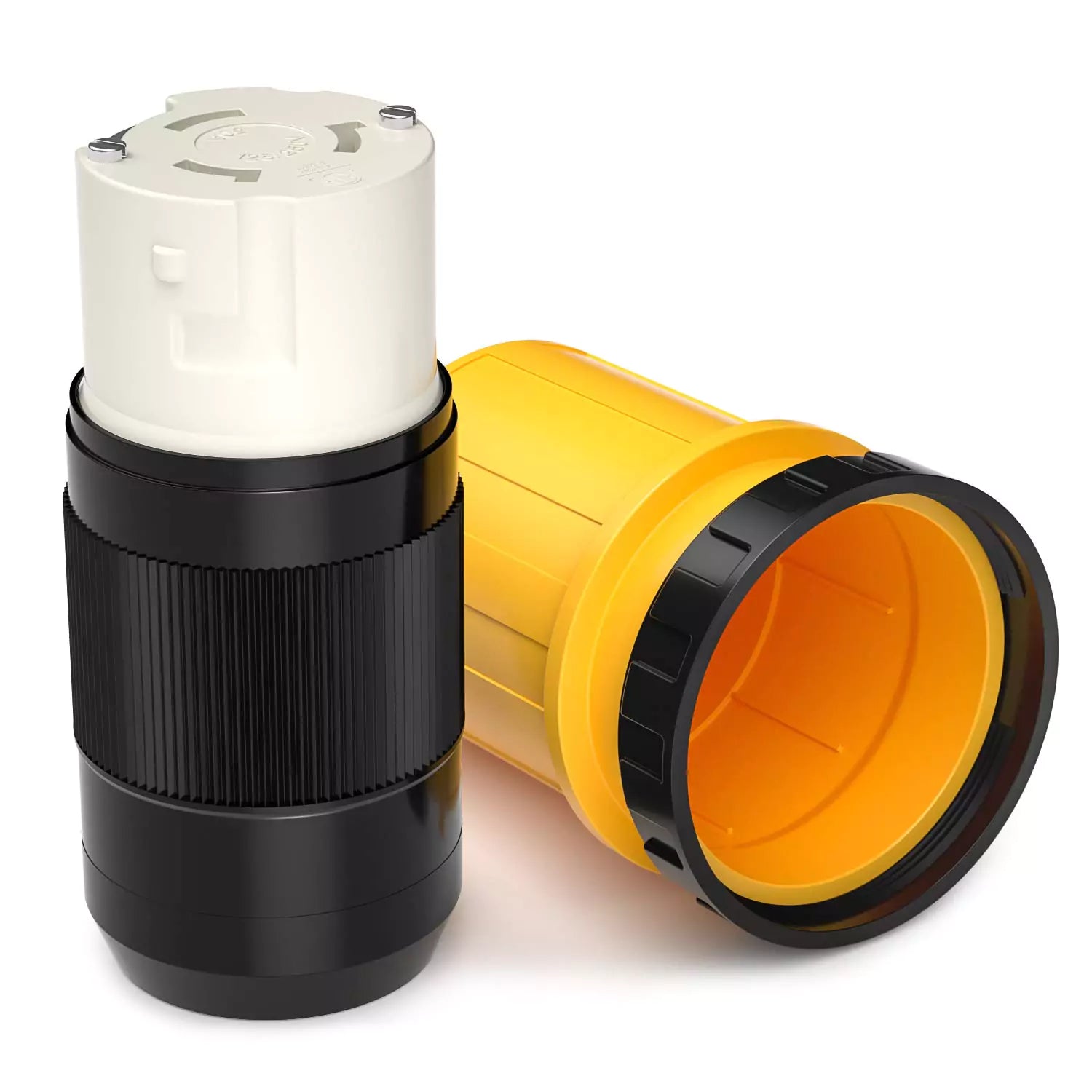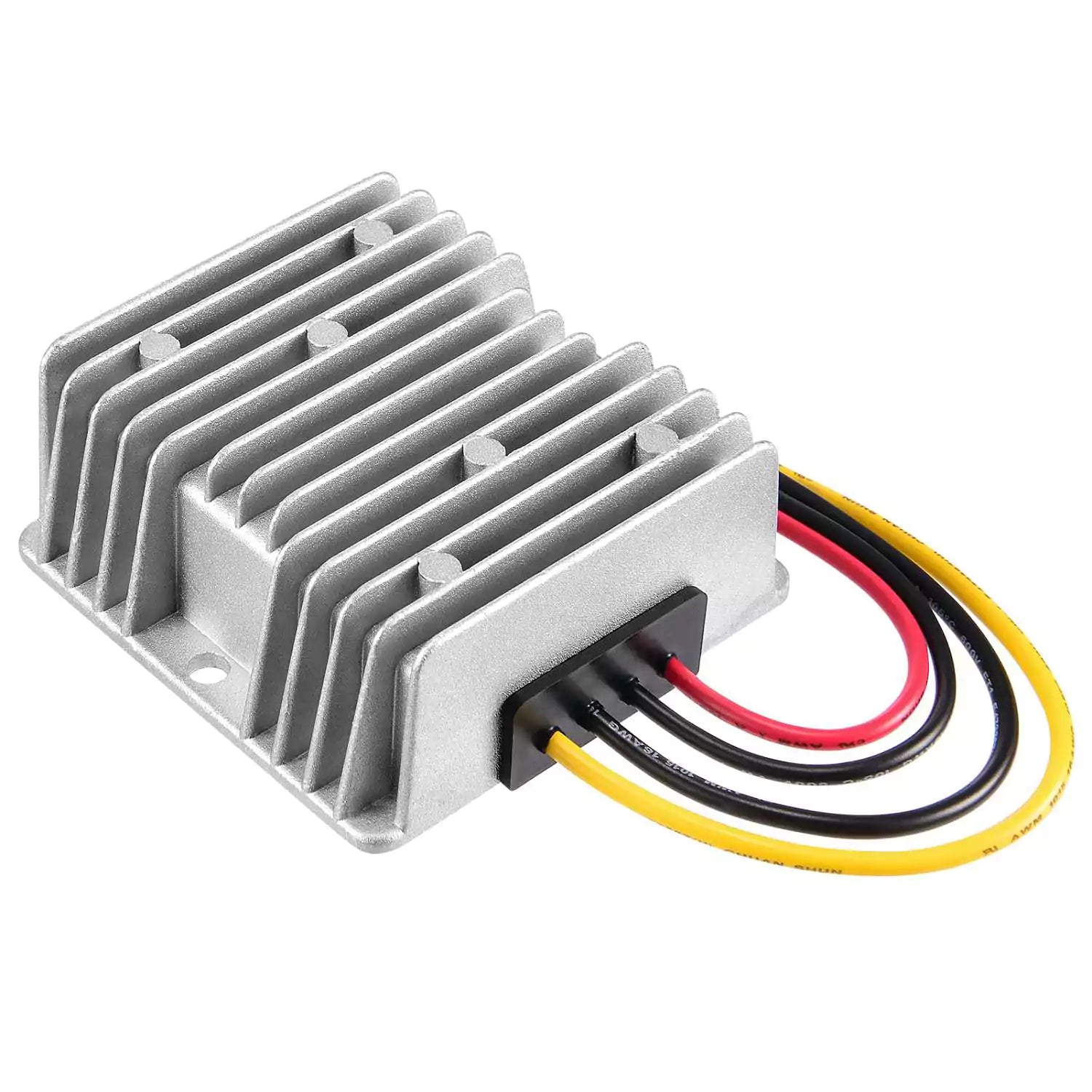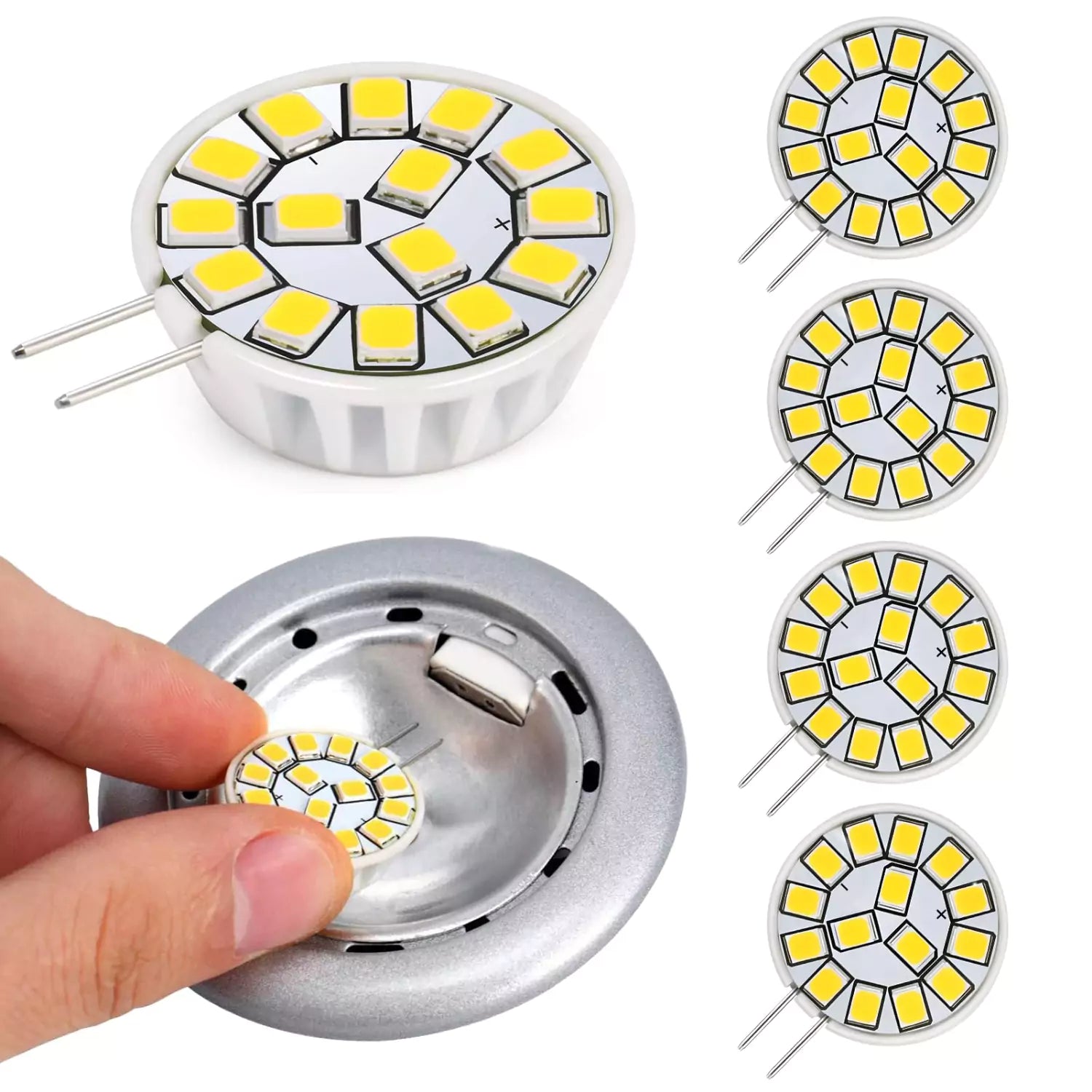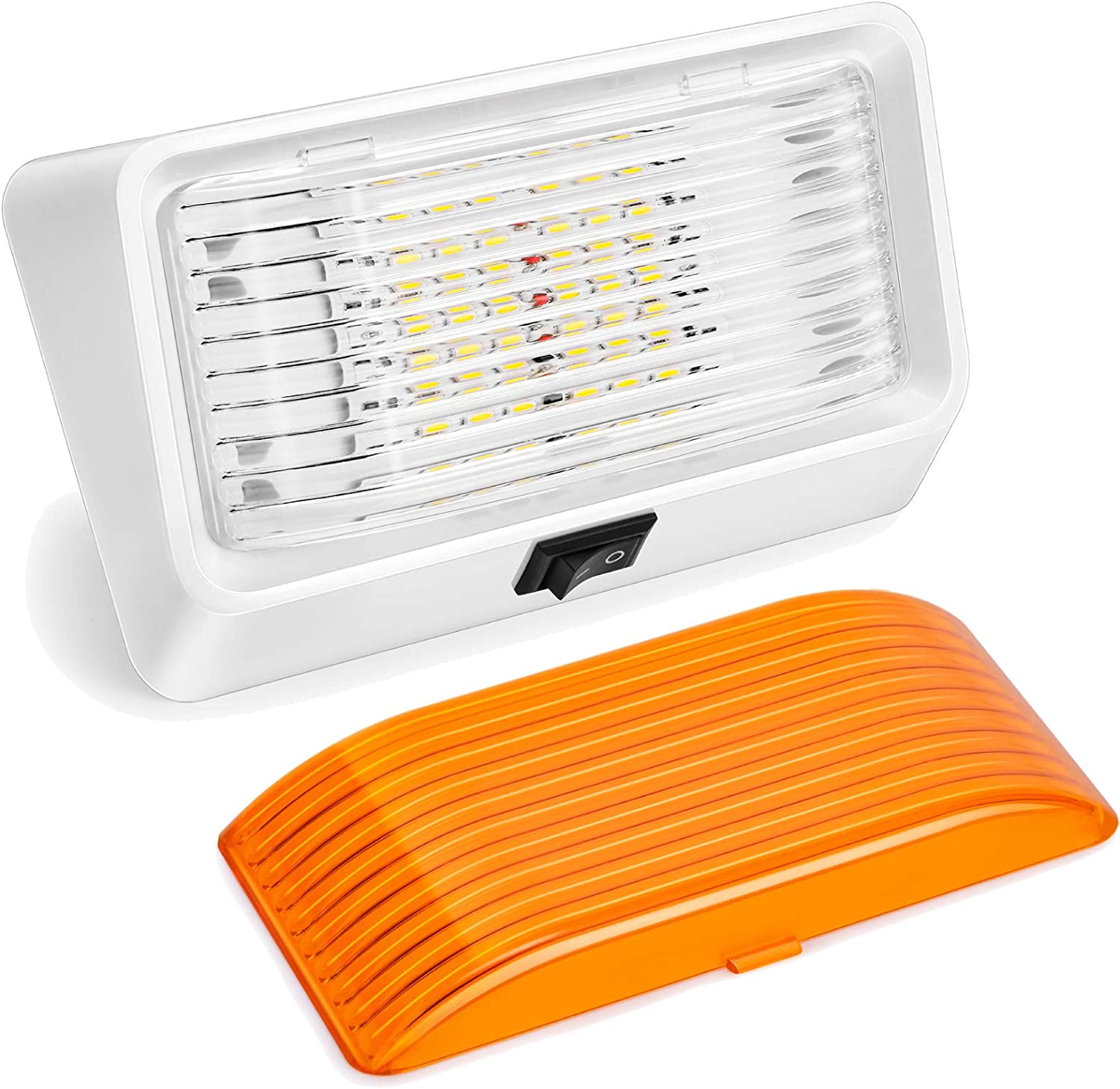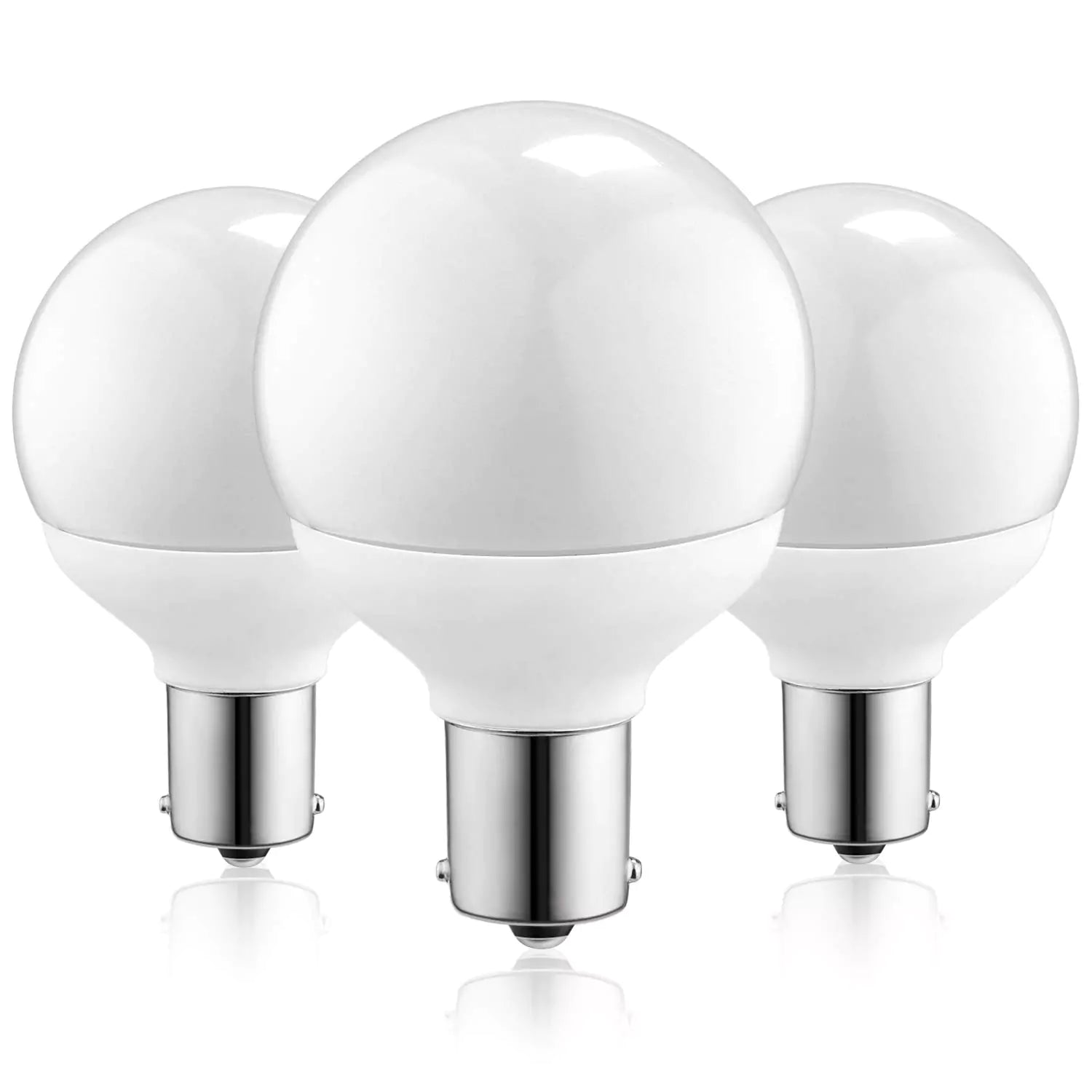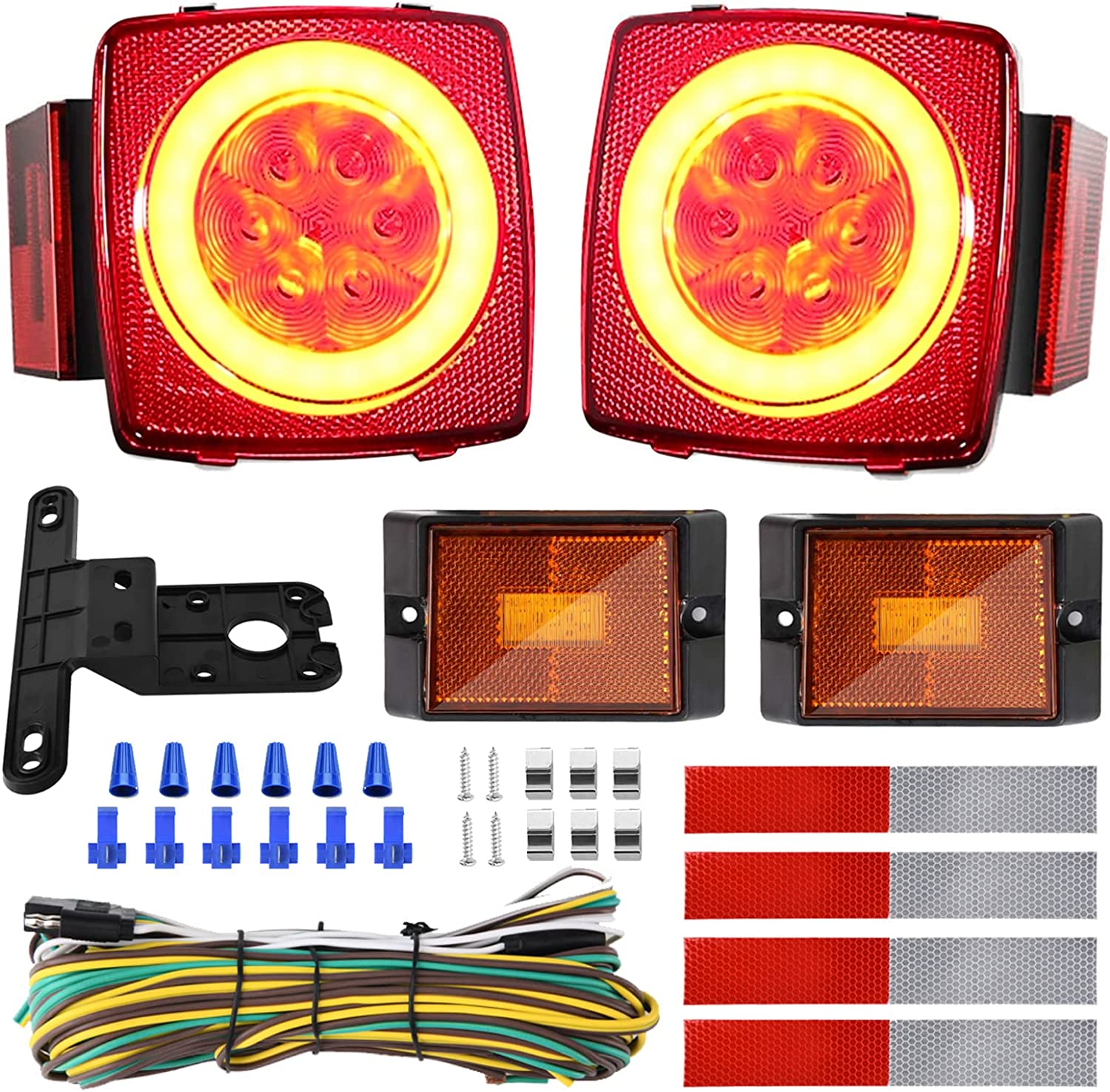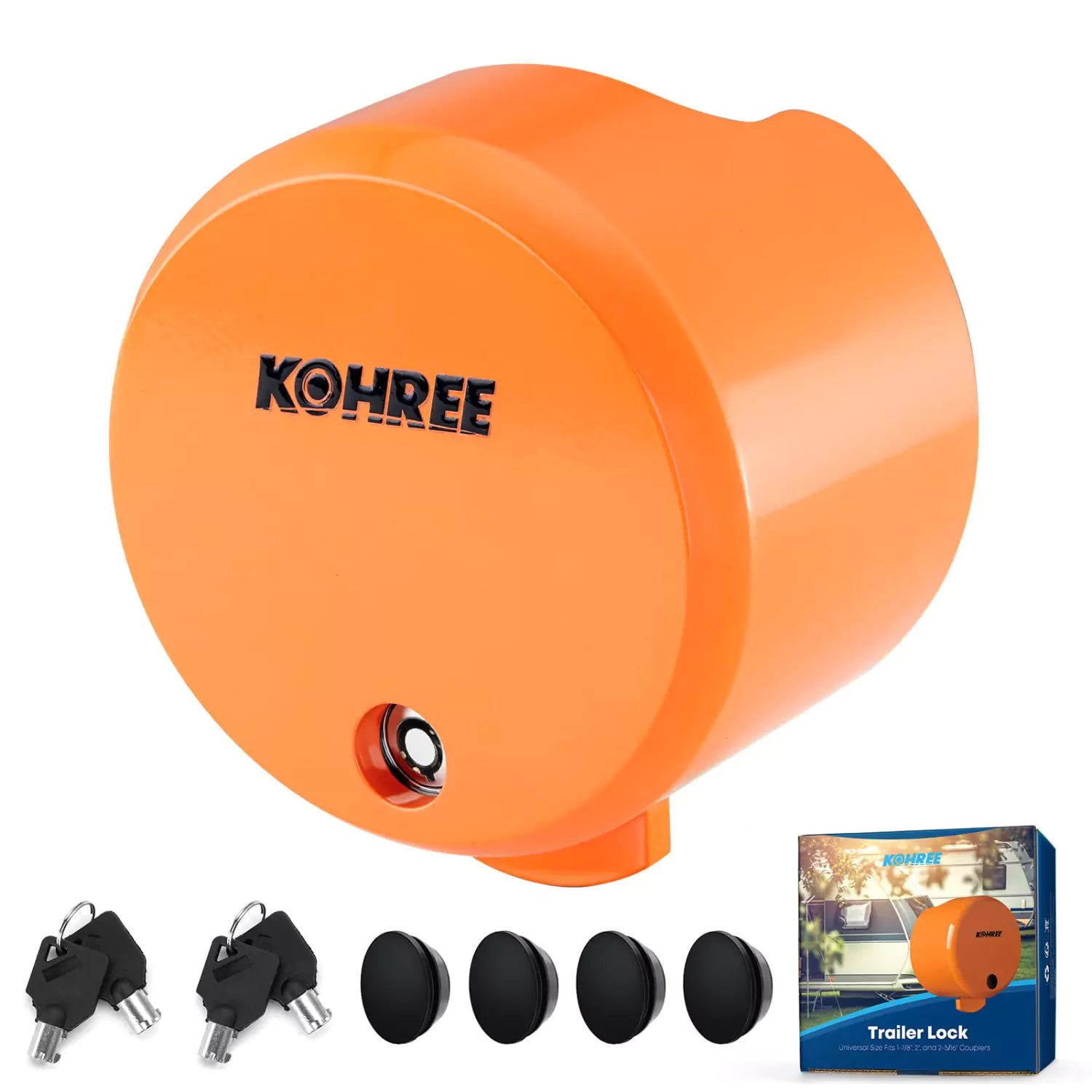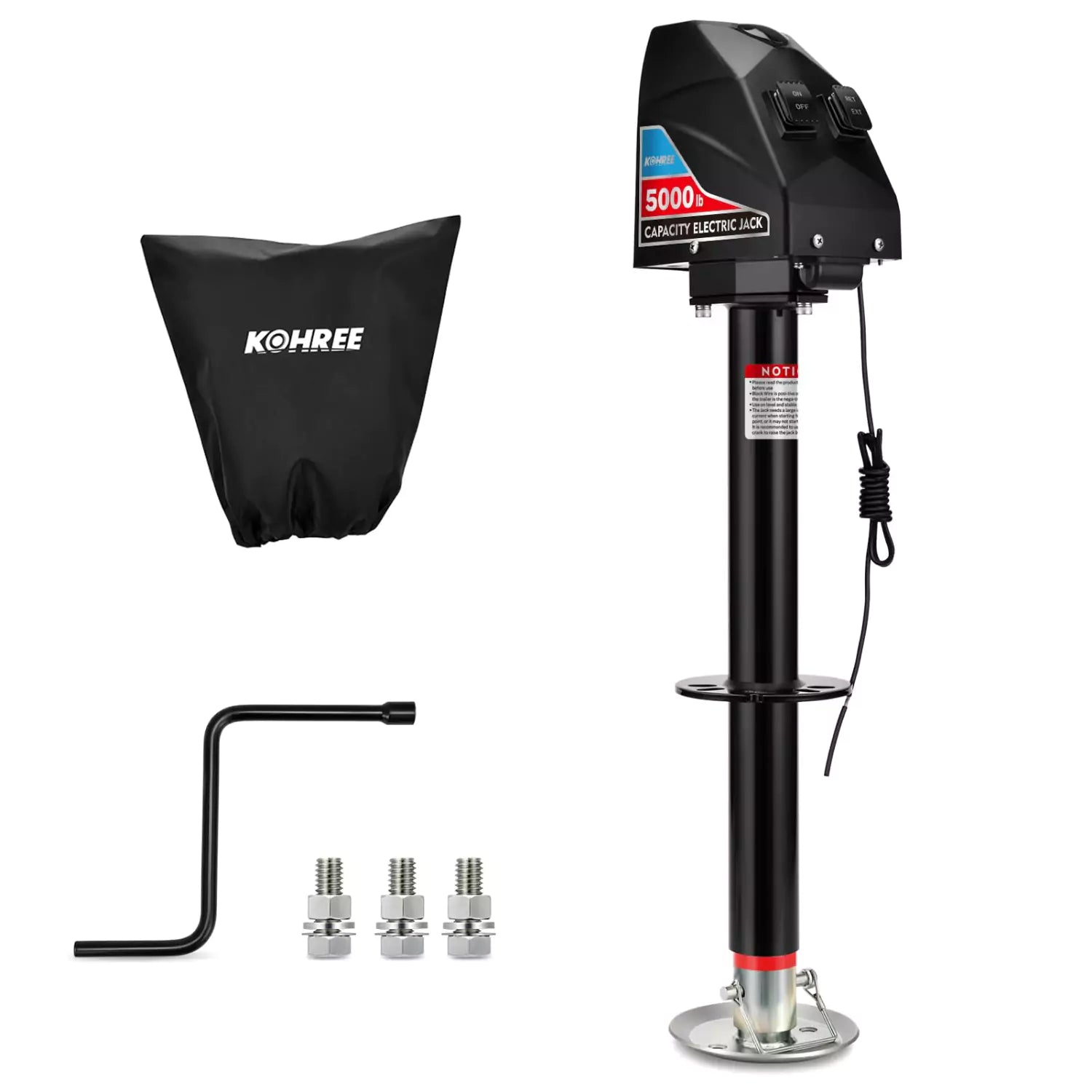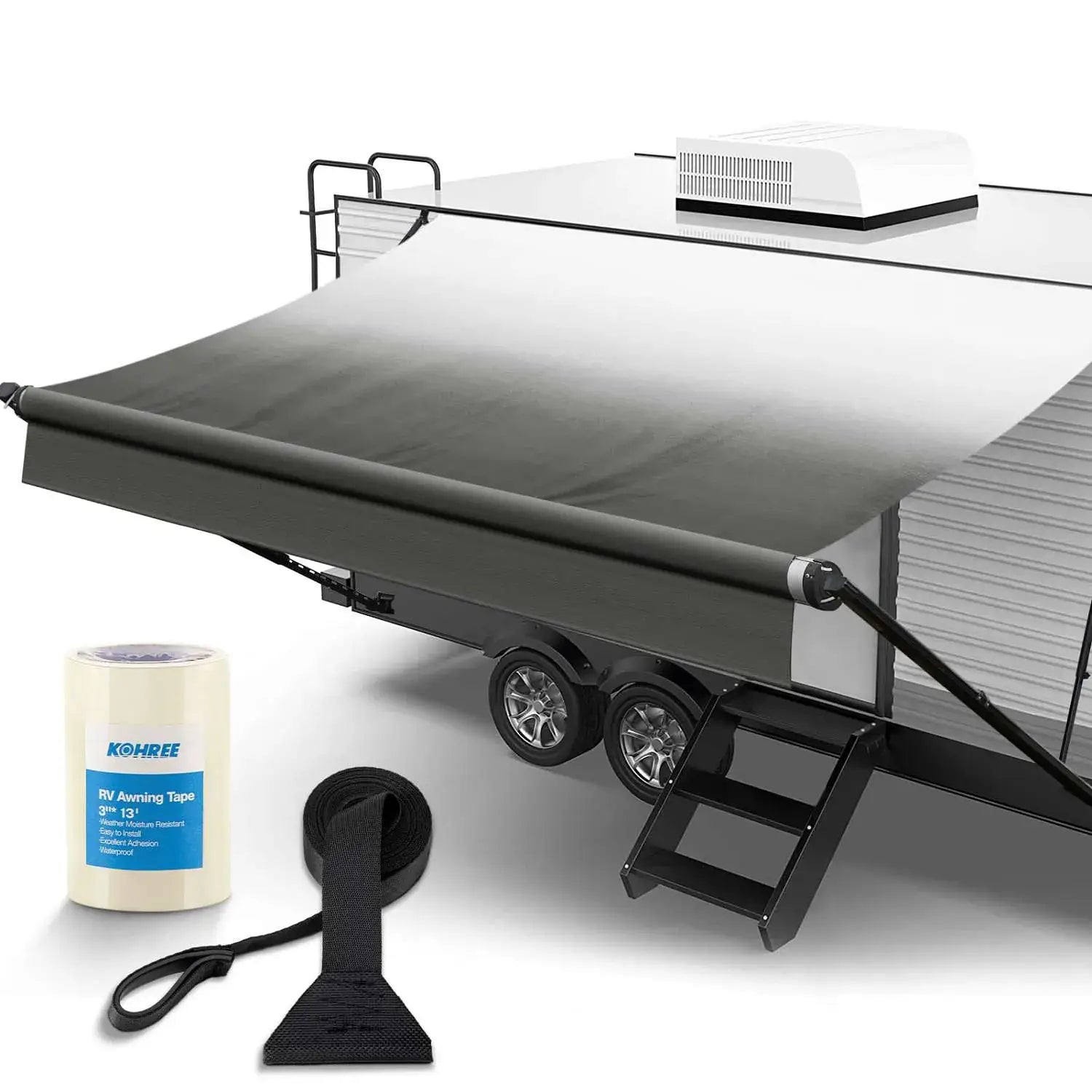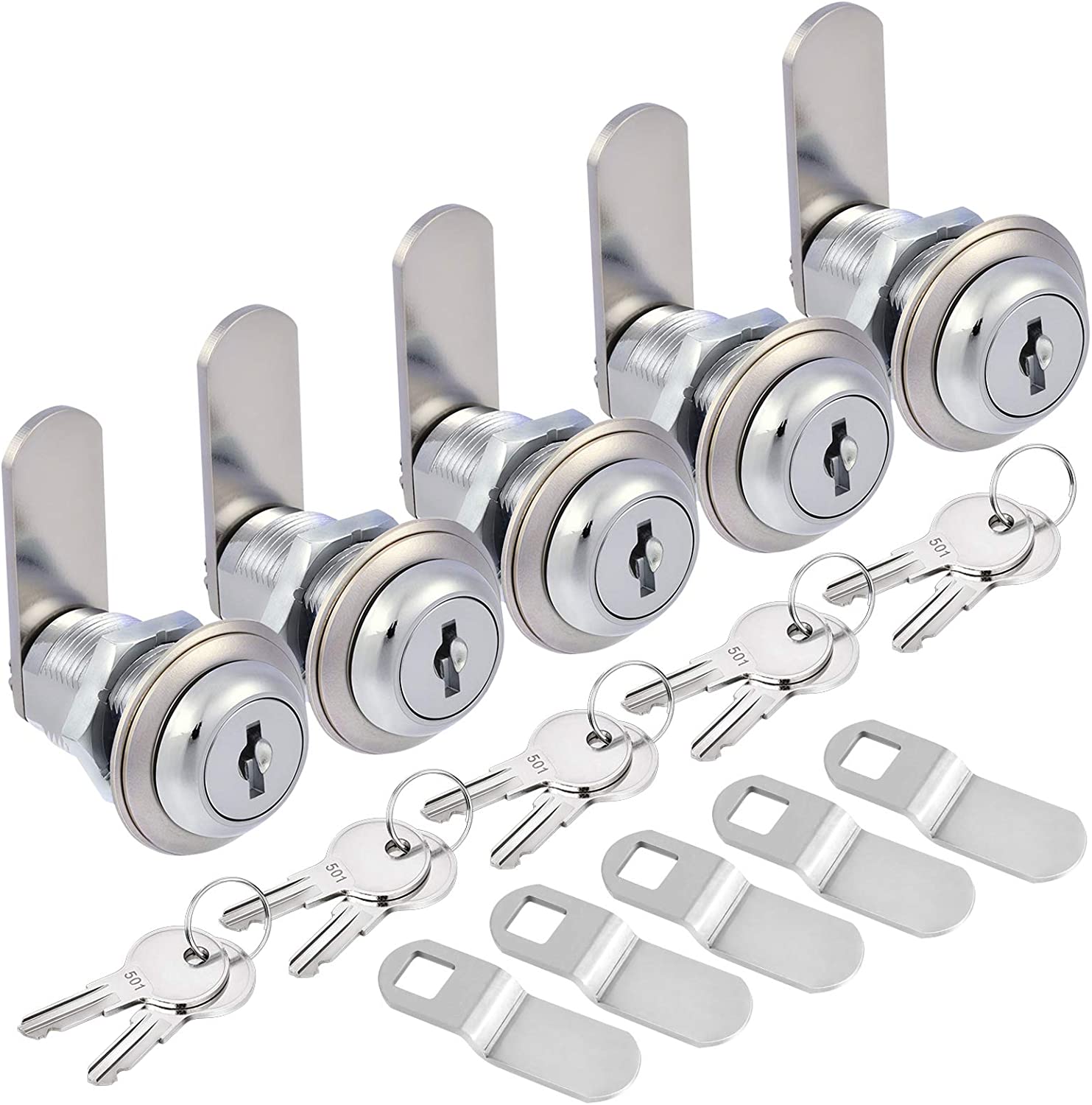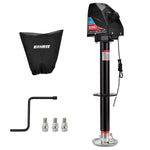Maintaining a comfortable and healthy environment inside your RV or camper is crucial, a key aspect is ensuring proper ventilation. This not only keeps the interior dry but also promotes easy breathing. Having the right RV vent fan can make all the difference. Whether you're camping in hot summer weather, combating humidity, or dealing with cooking odors, a good vent fan helps regulate the air and keep your living space fresh. However, with so many different models and features available, how do you choose the best one for your needs?
In this guide, we'll dive into everything you need to know about RV roof vent fans. From understanding their benefits to comparing the features, we'll help you make an informed decision. So, if you're in the market for an RV ventilation fan, keep reading!
What is an RV Vent Fan?
RV roof vent fans are specialized mechanical ventilation devices designed to improve airflow and ventilation inside your RV by drawing out hot air, moisture, and unwanted odors. Typically mounted on the roof or side, these fans help circulate air, creating a continuous airflow system that regulates internal conditions and prevents moisture buildup, which can lead to mold and mildew.
An RV vent fan is your primary defense against poor air quality and uncomfortable temperatures in your recreational vehicle. Unlike basic roof vents, these powered ventilation systems actively move air in and out, creating a more comfortable living environment.
These fans are typically mounted on the RV's roof and come in various sizes, with 14"x14" being the most common. As RV living improves and technology advances, the variety of RV vent fans has also increased, ranging from the simplest manual models to those with advanced features like rain sensors, thermostats, and remote controls.


Do RV Vent Fans Really Work?
RV vent fans work by pulling air out of your RV, allowing fresh air to flow in. They either exhaust hot air from the interior or create a cross-breeze that draws cool air inside. Roof-mounted fans use airflow dynamics to pull air upward, while side-mounted fans may offer a more direct flow. Most RV vent fans have a motor that powers the fan blades and can be controlled manually or electronically, depending on the model.
The operational principle behind RV ventilation systems relies on creating positive or negative air pressure. When operating in exhaust mode, these fans pull warm, stale air from inside the RV and expel it outside, removing cooking odors, excess moisture, and hot air. In intake mode, they draw fresh air from the exterior, promoting constant air circulation and creating a pleasant breeze throughout the RV.
Most modern units feature multiple speed settings and can move anywhere from 350 to 900 cubic feet of air per minute (CFM). This flexibility allows you to adjust the ventilation based on your specific needs. These units can exchange the entire air volume of an average-sized RV within minutes, making them incredibly efficient at maintaining comfort levels and preventing moisture accumulation.
I can confidently say that quality RV vent fans are incredibly effective. In fact, they're one of the most underappreciated components of RV comfort systems. When properly installed and used, these fans can lower the interior temperature by 10-15 degrees Fahrenheit without running your air conditioner, significantly reducing your energy consumption.
The key is understanding how to use them effectively. For instance, opening a window on the shaded side of your RV while running the vent fan creates a cross-breeze that maximizes cooling efficiency. This simple technique has saved me countless hours of generator runtime during boondocking adventures.
Benefits of Using Camper Vent Fans
Improved Air Quality
A primary benefit of camper vent fans is improved air quality. These fans work to eliminate stale air by replacing it with fresh air from the outside. By creating consistent airflow, the fan can help keep the air inside your camper free from odors, smoke, or other pollutants that may accumulate.
Replace Stale Air
On long trips, the air inside your camper can become stagnant. A camper roof vent fan helps to continuously replace stale air with fresh air, keeping your camper feeling clean and breathable.
Temperature Regulation
When it's hot outside, the temperature inside your camper can quickly become unbearable. A 12V vent fan for RV helps regulate the temperature by expelling hot air, allowing cooler air to replace it. In combination with other cooling methods, such as shade or window venting, this can significantly reduce your reliance on air conditioning.
Keeping Cool on Hot Days
Even if your RV has an air conditioner, it may not always be sufficient to maintain comfortable temperatures, especially during the height of summer. RV vent fans create airflow that can assist in cooling your RV naturally, reducing the need for power-hungry air conditioners.
Preventing Moisture Build-up
Moisture buildup is a common issue in RVs, especially in rainy conditions or during cooking. If left unaddressed, excessive moisture can lead to the growth of mold and mildew. A camper vent fan helps prevent this by extracting humid air from the inside and allowing drier air to flow in.
Energy Efficiency
Compared to air conditioning units, camper vent fans are much more energy-efficient. They use very little power, making them an excellent choice for conserving energy while still enhancing comfort. Even when running continuously, most modern camper vent fans consume a minimal amount of electricity.
Minimal Power Draw
Many camper vent fans are designed to minimize power usage, making them ideal for boondocking or off-grid camping where the power supply is limited. The low energy consumption ensures that your camper's battery or solar setup won't be depleted quickly.
Enhanced Comfort
By regulating temperature, reducing moisture, and improving air quality, RV vent fans significantly enhance your overall comfort. Whether you're trying to stay cool on a hot summer day or keep the air inside fresh, these fans offer a practical solution.
Noise Reduction
Many newer models are designed with noise reduction technology to ensure they operate quietly. This feature is particularly beneficial if you're in a quiet area or want to avoid disturbing others while traveling.
Why You Need to Use RV Roof Fan In Winter?
You might wonder why you would need to ventilate a RV in the winter when it's already so cold. However, proper ventilation is essential even during the winter months.
When you're inside the RV, activities like breathing, cooking, and showering generate a significant amount of moisture. In cold weather, this moisture condenses on cold surfaces such as windows and walls, creating conditions that can lead to mold growth.
Therefore, using the RV's ventilation fan for proper airflow in winter helps maintain a dry and balanced interior environment. It effectively removes moist air and prevents condensation buildup.
Types of RV Vent Fans
The RV roof fan can be categorized based on several key factors, primarily their installation method and operational mechanism. This categorization can help you select the most appropriate ventilation solution for their specific needs and circumstances.
Roof-Mounted Fans: The Standard for RV Ventilation
Roof-mounted fans represent the most prevalent installation type in the RV market, largely due to their effective utilization of natural convection principles. These fans capitalize on the tendency of hot air to rise, creating a natural upward draft that efficiently exhausts warm, stale air from the RV's interior.
This natural airflow dynamic, combined with the fan's motor, maximizes ventilation efficiency. The standard size for roof-mounted fans is typically a 14 x 14-inch square opening, a dimension that has become an industry standard and ensures compatibility with most RV roof structures.
This standardization simplifies installation and replacement processes. Furthermore, the roof location often provides optimal exposure to prevailing winds, further enhancing the fan's ability to exhaust air and promote cross-ventilation when windows or other vents are open.
Roof-mounted fans are particularly effective in combating heat buildup during warm weather and reducing moisture accumulation, which is crucial for preventing mold and mildew growth. Installing a roof vent fan not only improves ventilation but also brightens the RV interior with natural light, you can open or close it manually. It typically includes a mosquito net for added safety.


Side-Mounted Fans: An Alternative Solution
Side-mounted vent fans offer a viable alternative to roof-mounted units, particularly in situations where roof installation is impractical due to structural limitations, existing roof fixtures (such as air conditioners or solar panels), or when additional ventilation points are desired to maximize airflow.
While less common than their roof-mounted counterparts, side-mounted fans can effectively complement roof units by creating a more pronounced cross-breeze, drawing fresh air in through one vent and expelling stale air through another.
This cross-ventilation strategy is especially beneficial in larger RVs or in climates with high humidity. Side-mounted fans may also be preferred in situations where minimizing roof penetrations is a priority.
However, their performance can be more susceptible to wind direction and external obstructions compared to roof-mounted fans, which benefit from the consistent upward flow of hot air.


Manual RV Fans: Reliability and Affordability
Manual RV vent fans represent a simpler and more economical approach to RV ventilation. These fans require a physical operation to open and close the vent cover and adjust the fan speed, typically using a hand crank or similar mechanism.
While they lack the automated features of electric models, manual fans offer inherent reliability due to their simpler design. They are less prone to mechanical or electrical failures and often come with a lower initial purchase price. This makes them an attractive option for budget-conscious RV owners or those who prefer a more hands-on approach to controlling their RV's ventilation.
However, the lack of automation means that users must manually adjust the fan based on changing weather conditions or interior needs.


Electric RV Fans: Convenience and Automation
Electric RV vent fans provide a significantly greater level of convenience and control compared to manual models. These fans are powered by an electric motor and often incorporate a range of automated features designed to enhance user experience and optimize ventilation efficiency. Electric fans can be controlled via switches, wall-mounted panels, or even remote controls, allowing users to adjust fan speed and airflow direction from anywhere within the RV. Many advanced electric models include features such as:
- Thermostats: These allow the fan to automatically turn on or off based on the interior temperature, maintaining a consistent and comfortable environment.
- Rain sensors: These sensors automatically close the vent cover when rain is detected, preventing water from entering the RV.
- Multiple speed settings: These offer greater flexibility in controlling airflow, allowing users to adjust the fan's performance based on specific needs.
- Reverse airflow function: This allows the fan to operate in intake mode, drawing fresh air into the RV.
While electric fans offer enhanced convenience and functionality, they typically come with a higher purchase price and require a reliable power source. They also have the potential for electrical or mechanical issues, although modern models are generally designed for durability and longevity.


| Fan Type |
Characteristics |
Best For |
| Roof-mounted |
Permanent installation |
Long-term RV travelers |
| Side-mounted |
Portable, flexible placement |
Smaller RVs, temporary use |
| Manual |
Hand-operated |
Budget-conscious travelers |
| Electric |
Powered operation |
Convenience-seeking campers |
How to Choose the Right RV Roof Vent Fan?
Choosing the right RV roof vent fan involves considering several factors to ensure it meets your specific needs and provides adequate ventilation for your RV. Here are some key factors to consider before your purchase:
Fan Size and Compatibility
Before purchasing an RV vent fan, you need to ensure it will fit properly in your vehicle. Most RV roof vents are designed for a standard 14" x 14" opening, but you should always measure your existing vent opening first. Additionally, consider the height clearance of the fan assembly, especially if you have storage or travel restrictions due to low bridges.
Ventilation Efficiency Ratings
A fan's CFM (Cubic Feet per Minute) rating indicates its air movement capacity. Higher CFM ratings generally provide superior ventilation performance, allowing the fan to exchange air more quickly and efficiently throughout your RV. When selecting a fan, this rating should be one of your primary considerations.
Matching CFM to RV Size
Your RV's interior volume plays a crucial role in determining the appropriate CFM rating. Larger recreational vehicles require fans with higher CFM ratings to ensure proper air circulation throughout the space. For optimal performance, consider your RV's square footage and ceiling height when evaluating fan specifications.
Lifestyle and Environmental Factors
Your typical RV usage patterns should influence your CFM requirements. Higher CFM ratings become particularly important if you:
- Cook frequently inside your RV
- Use the shower regularly
- Camp in humid or warm climates
- Have multiple occupants
- Spend extended periods inside your RV
Essential Features to Consider
- Speed control: The functionality of your fan is crucial for effective ventilation. Look for features like multiple fan speeds for better airflow control and noise management. Some fans can integrate with your RV's thermostat for automatic operation when temperatures rise above a certain level.
- Intake and exhaust capabilities: Consider whether you need a fan that can both intake and exhaust air, as this versatility can be valuable in different situations.
- Manual or Electric: The choice between manual and electric lift systems is also important: while manual lifts require physical operation, electric lifts offer convenient control via switch or remote.
- Weather protection: For durability, look for vent fans with rain shields or covers that protect the fan from inclement weather. Some fans also come with rain sensors that automatically close the vent when it detect rain, providing peace of mind in changing weather conditions.
Climate and Usage Considerations
Your typical travel environment should influence your choice. For hot, humid areas, prioritize fans with higher CFM ratings and excellent exhaust capabilities. If you often travel in rainy regions, ensure your fan has robust weather resistance features. The size and type of your RV also matter - larger vehicles might benefit from more powerful roof-mounted models, while smaller campers might do well with simpler solutions.
Which Features Are Essential?
Think about when and how you'll use the fan most often. Will you primarily use it for temperature control, moisture management, or both? This will help determine which features are most important for your specific needs.
Recommendation Product
For RV owners seeking the best combination of features and value, I recommend the Kohree RV roof vent fan for its outstanding performance and reliability. Our RV exhaust fan boasts an impressive airflow capacity of up to 934 CFM, along with a remote control and a weatherproof design, making it perfect for all your outdoor adventures!


Superior Cooling Technology
Transforms your RV's climate with our powerful ventilation system, delivering an impressive 934 CFM airflow. The smart temperature monitoring system kicks in automatically at 78.8°F, ensuring your mobile home maintains optimal comfort during your adventures. Whether you're cooking, showering, or simply relaxing, this RV roof vent fan keeps your space fresh and comfortable.


Whisper-Quiet Operation
Experience is the perfect blend of power and peace with our virtually silent RV bathroom fan. With 10 adjustable speed settings and a noise level maxing out at just 50dB, you'll enjoy fresh air without disturbing conversation or sleep. The energy-efficient motor uses only 25W at full power, making it ideal for off-grid adventures and extended camping trips.
Weather-Smart Protection
Stay protected with our innovative automatic vent system. The durable, UV-resistant powered lid responds intelligently to weather changes, featuring an advanced rain sensor that automatically closes the vent when precipitation is detected. This smart RV roof vent ensures your interior stays dry and protected in any weather condition.
Ultimate Control Convenience
Take command of your RV's ventilation from anywhere inside with our intuitive remote control system. Easily switch between intake and exhaust modes, fine-tune your preferred speed setting among 10 options, and adjust airflow direction - all without leaving your seat. This hands-free operation brings modern convenience to your camping experience.


Effortless Installation
Upgrade your RV ventilation in minutes with our user-friendly installation system. Designed to fit perfectly into standard 14" x 14" RV roof openings, this ceiling fan comes complete with mounting hardware and premium weatherproof sealing tape. The removable bug screen adds an extra layer of protection, keeping insects out while maintaining maximum airflow efficiency.


Our RV roof fan kit includes everything you need for a convenient and safe installation. Now you can keep your RV interior consistently dry and fresh with a Kohree RV vent fan.
Summary
Investing in a quality RV vent fan is like giving your mobile home a breath of fresh air. Choosing the right one means considering your needs, budget, and desired features. Focus on quality construction, weather resistance, and an appropriate airflow capacity for your RV's size. Regular maintenance ensures optimal performance and longevity. Whether you choose a basic manual or a feature-rich electric fan, proper ventilation significantly improves your RV interior life experience.

